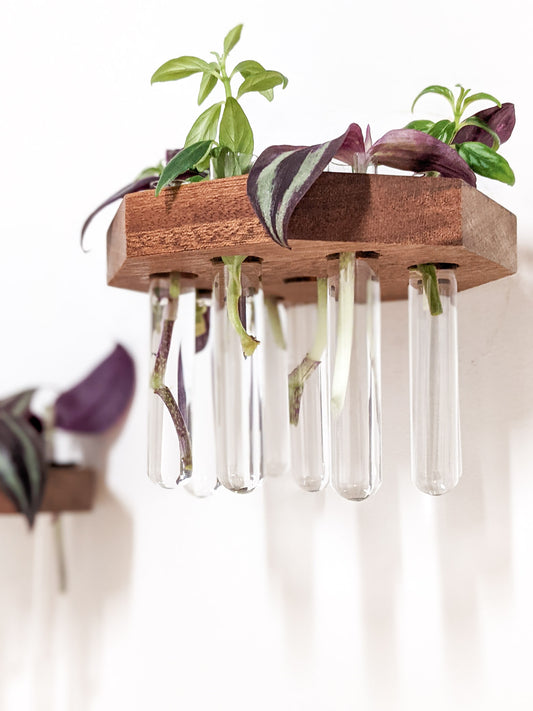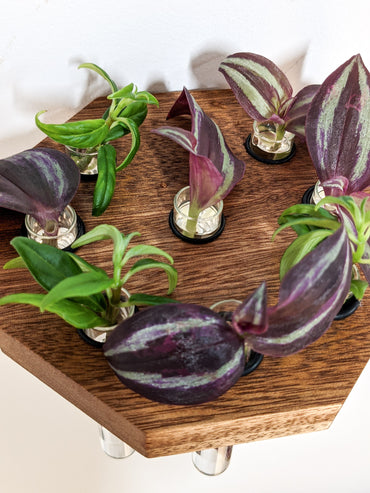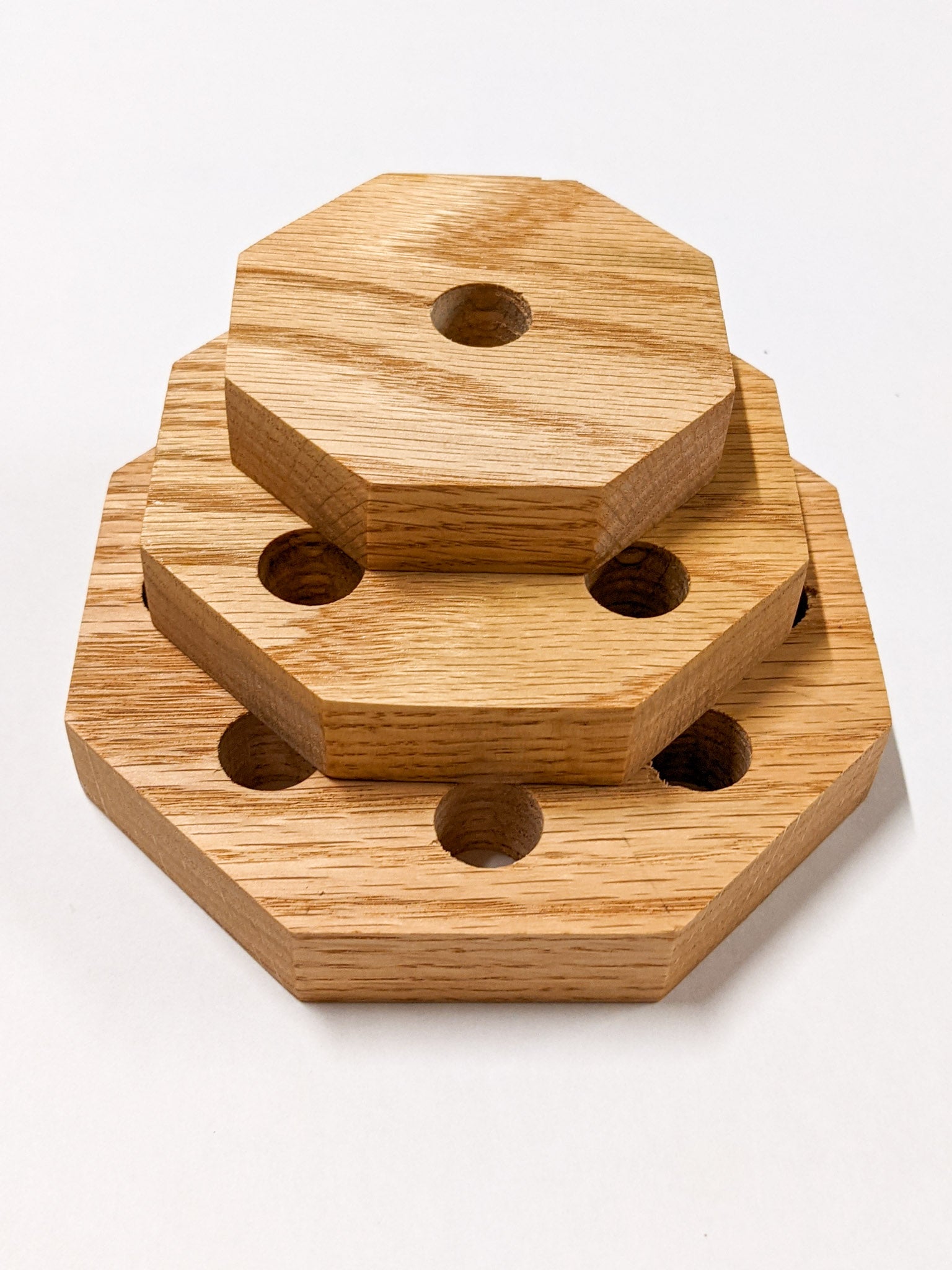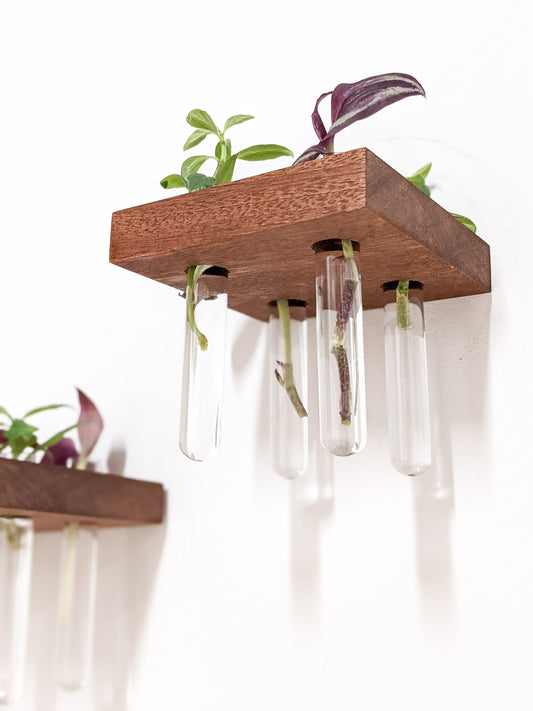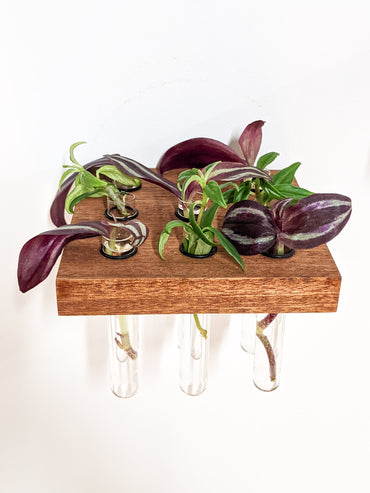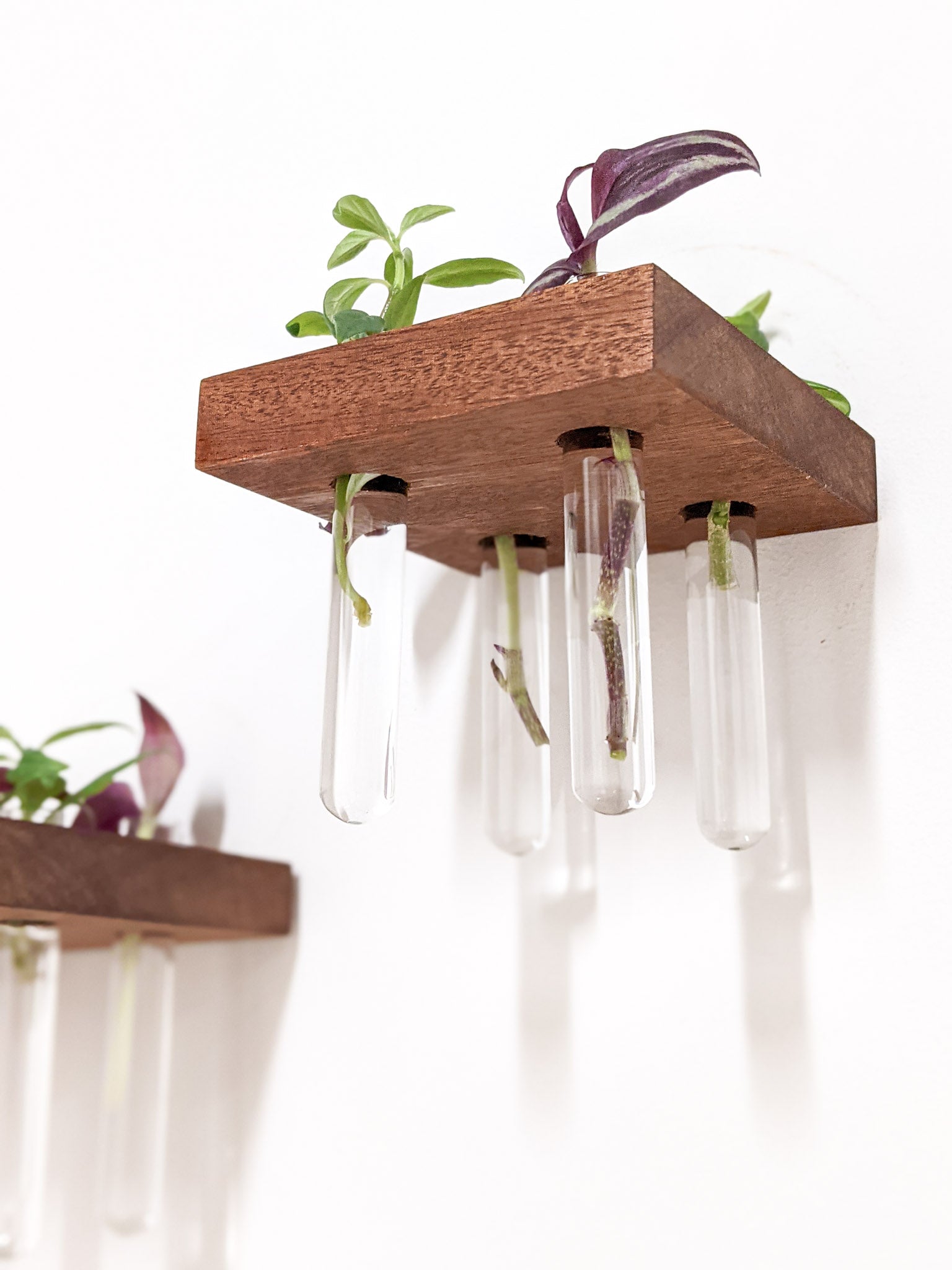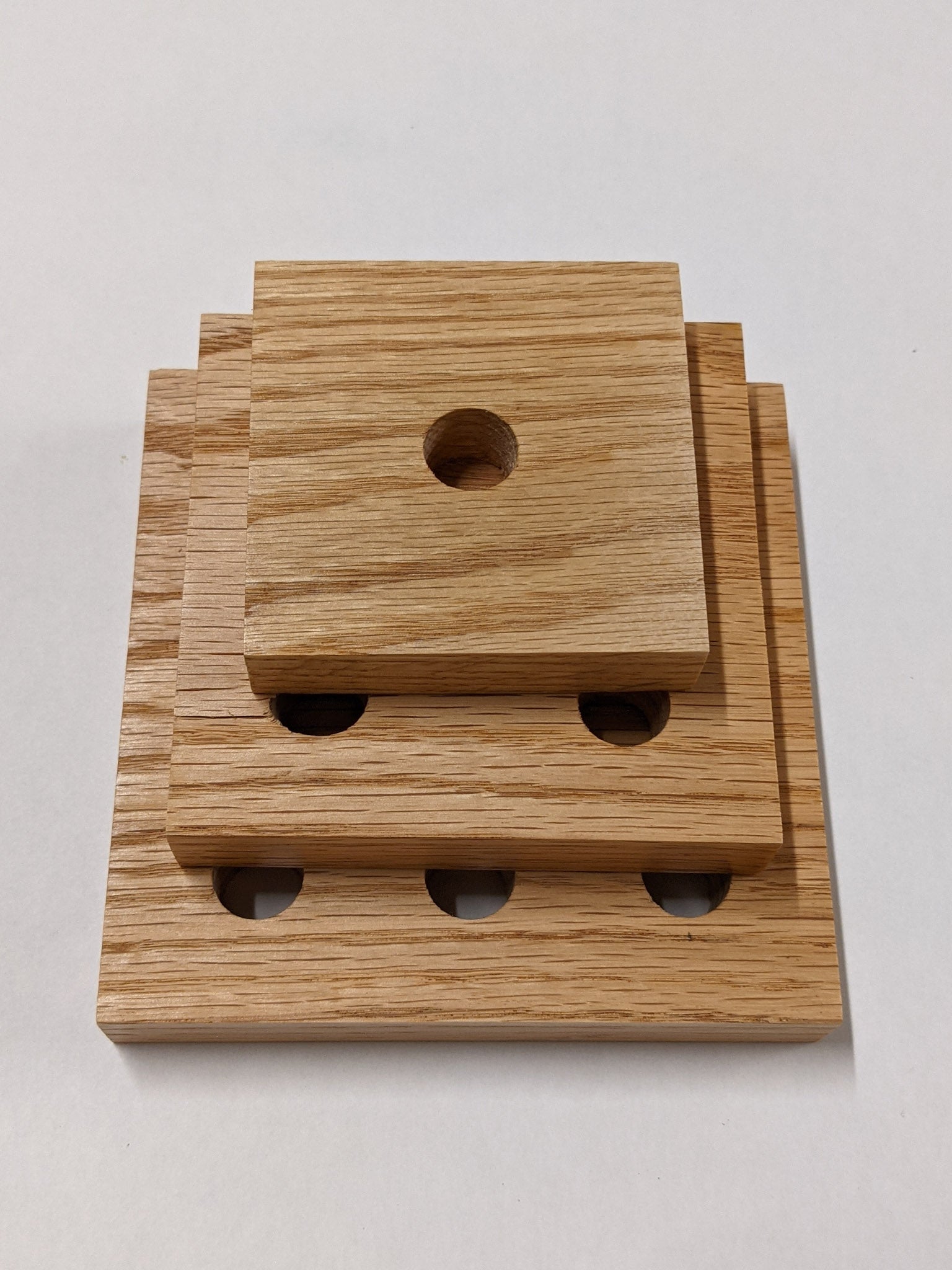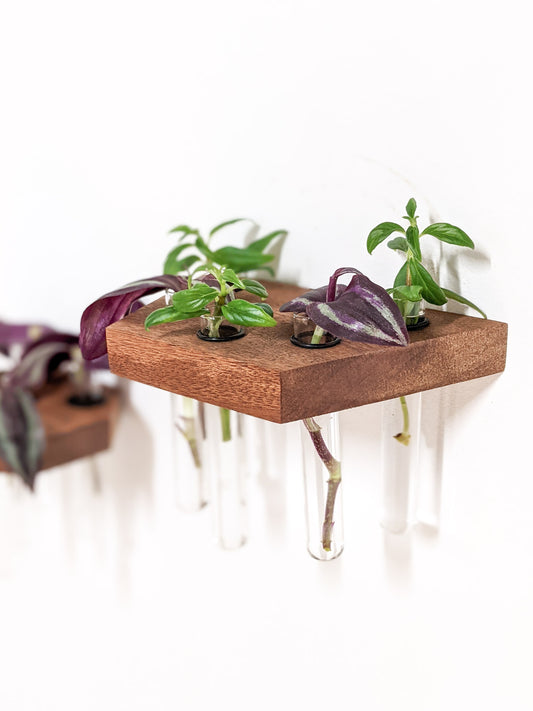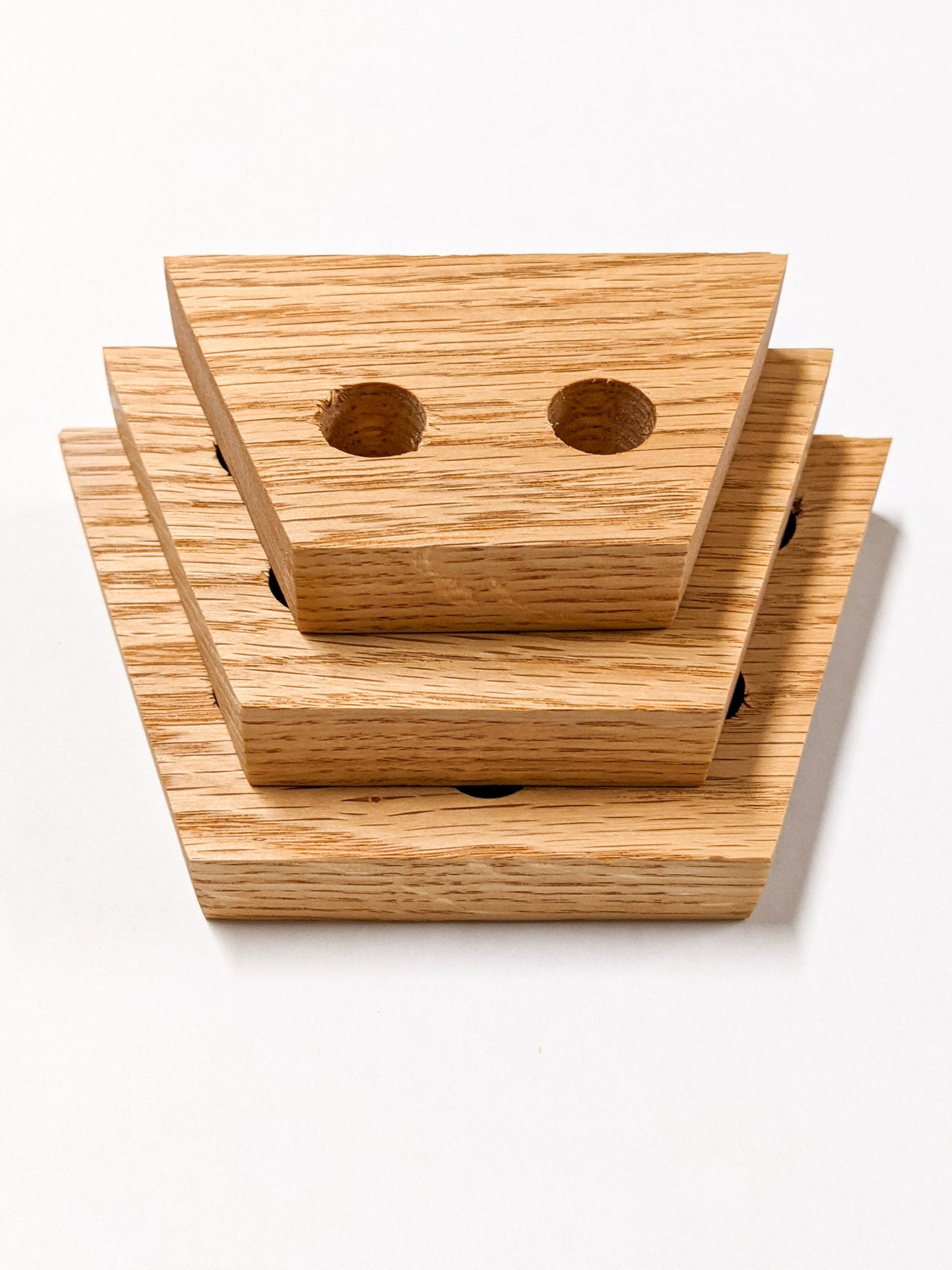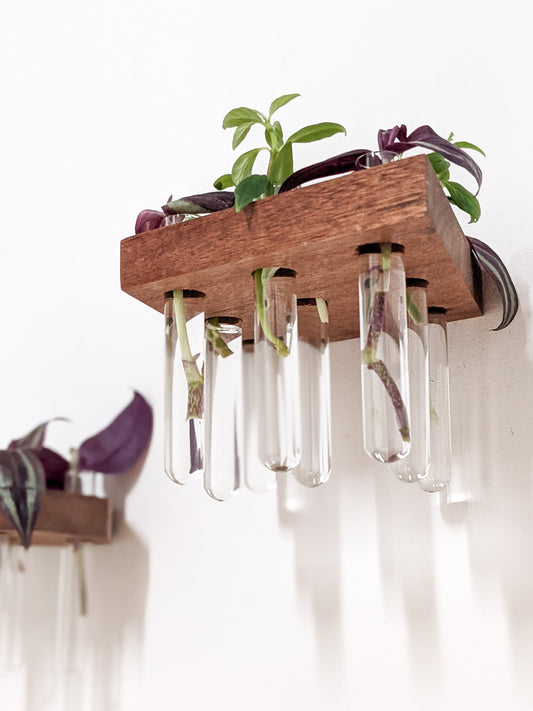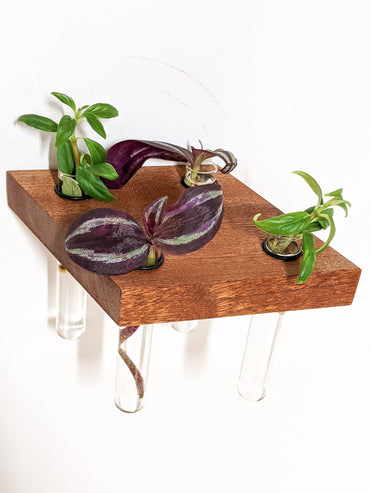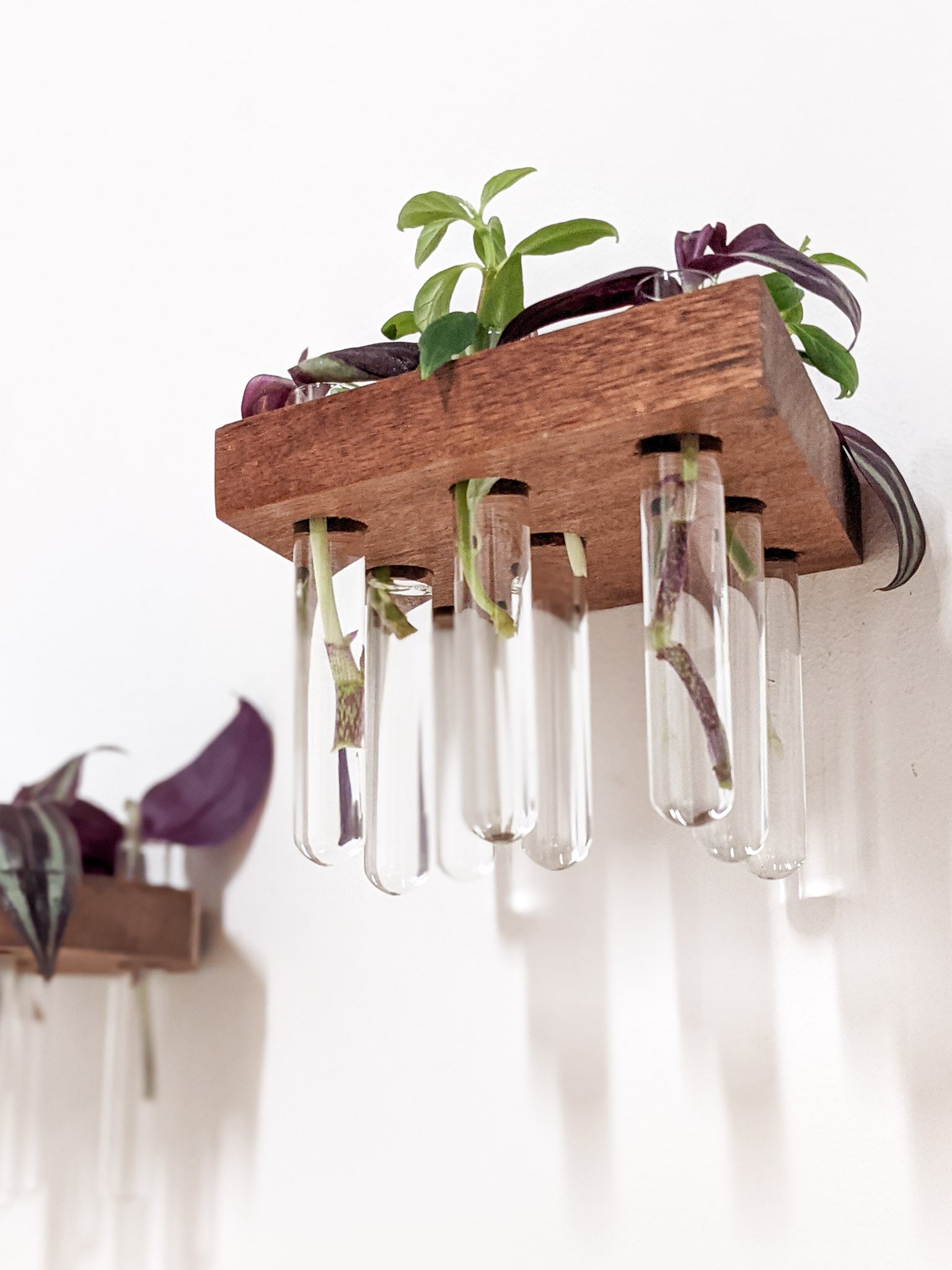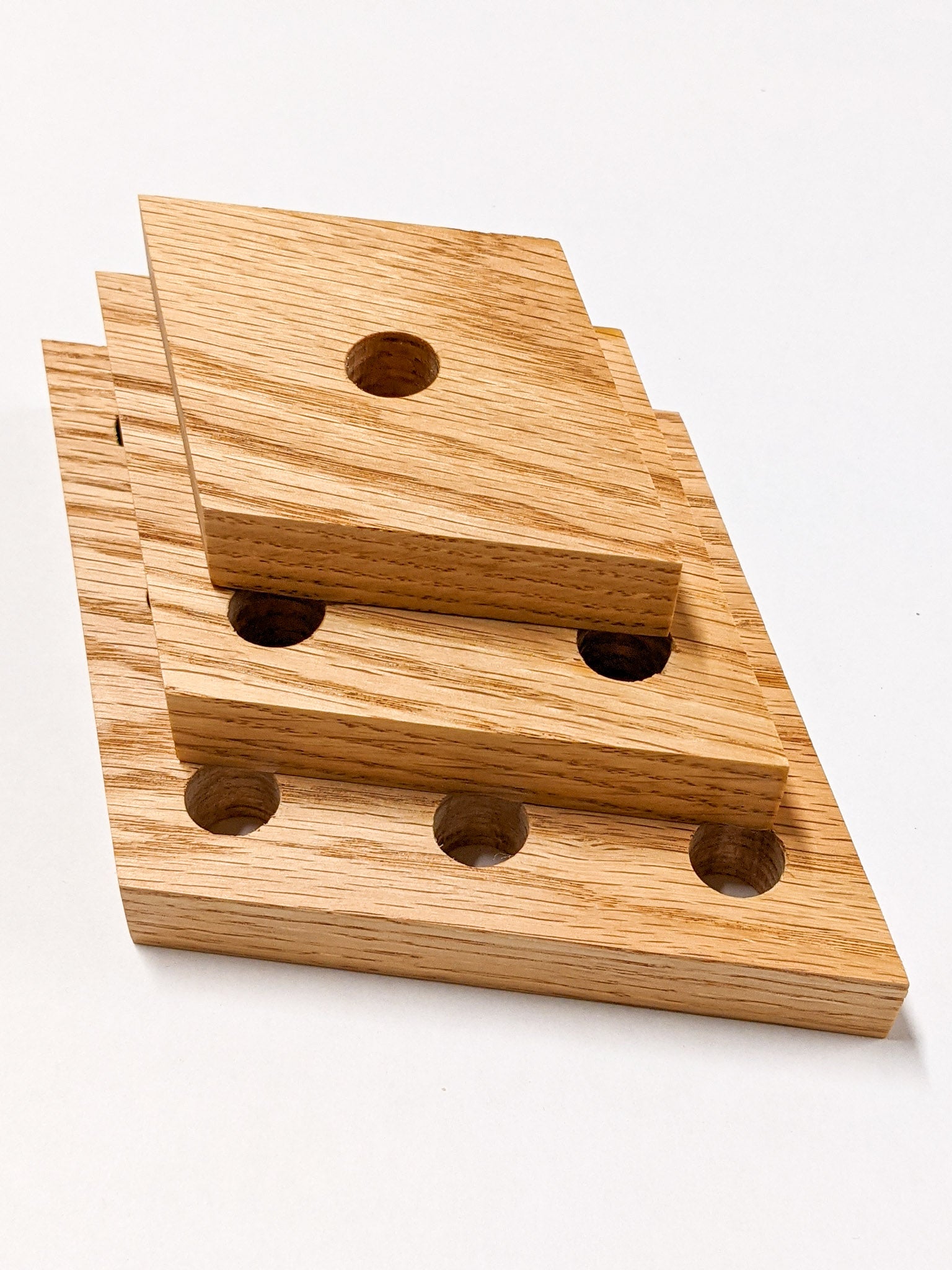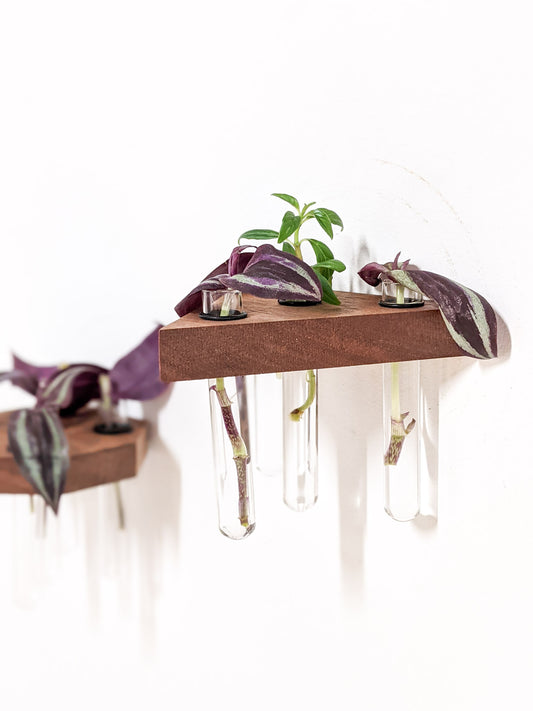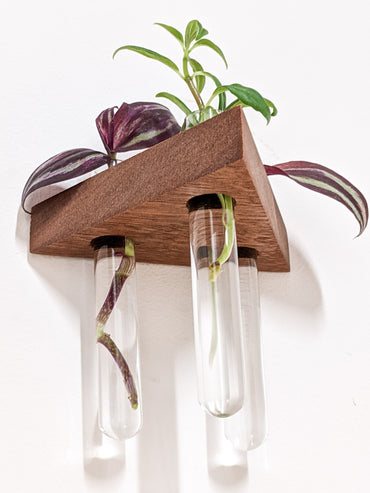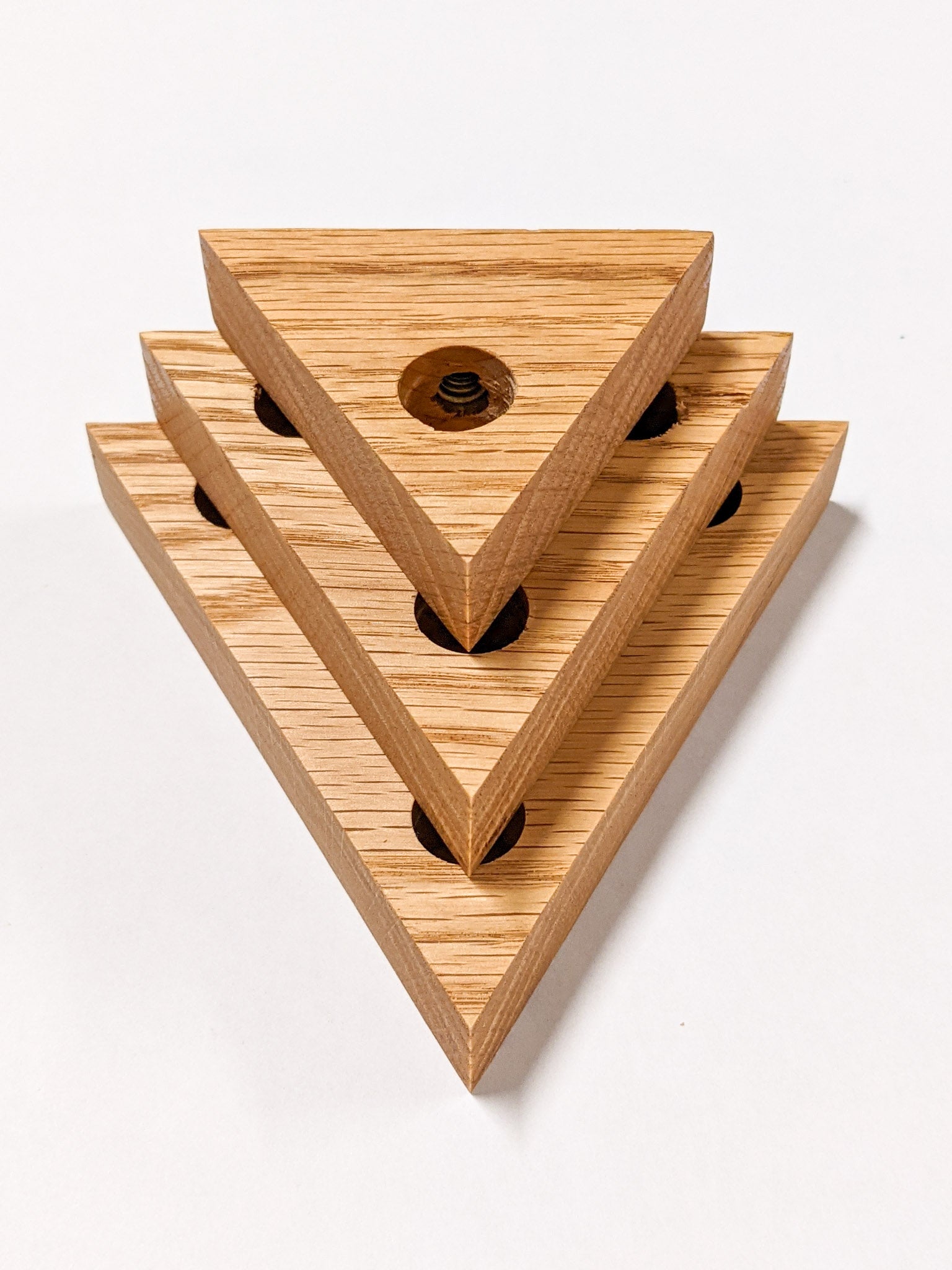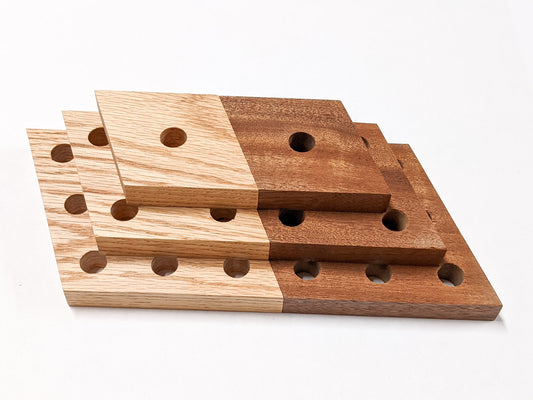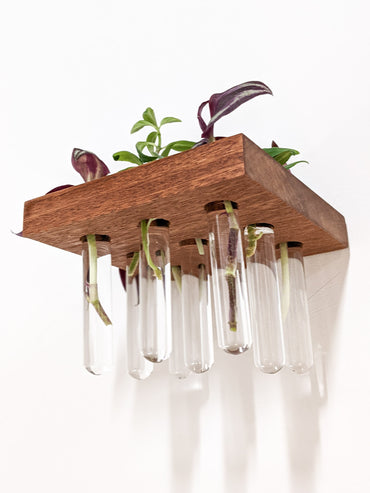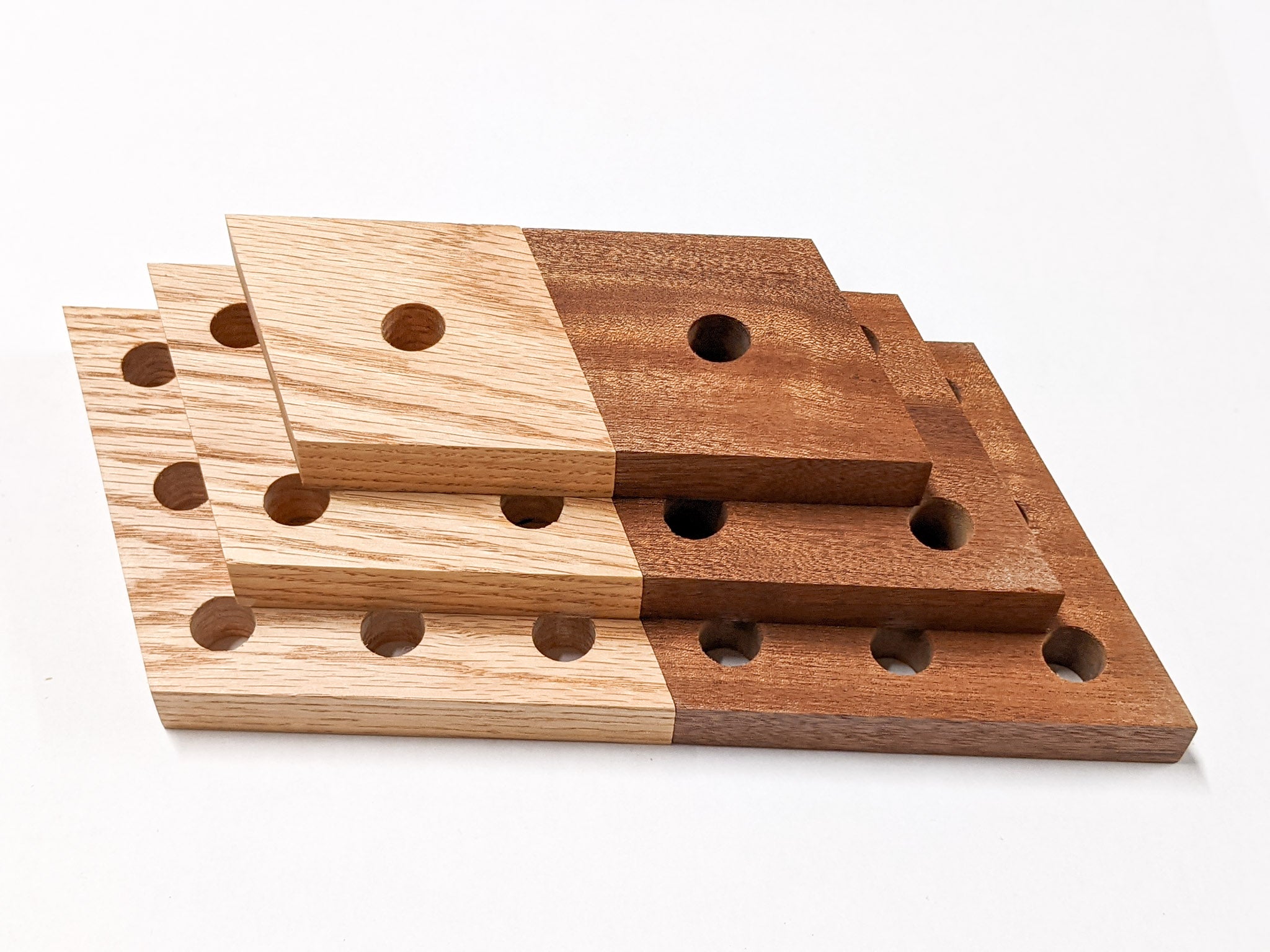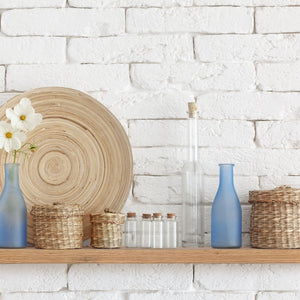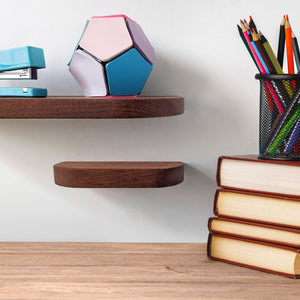Use your plant propagation station from NookWoodworking to stylishly propagate plants!
Here's a simple guide to get you started and ensure success in your propagation endeavors:
Select Suitable Plants: Begin by choosing plants that are known to root well in water, such as Pothos, Philodendron, Spider Plants, and many herbs like basil and mint. These plants have slender stems that can easily fit into the test tubes of your propagation station.
Prepare Your Cuttings: With a clean, sharp knife or scissors, cut a 4-6 inch section just below a node (the point where leaves emerge from the stem). This is where roots are most likely to sprout. Remove any leaves that would sit below the water level to prevent rotting.
Fill the Test Tubes: Fill the glass test tubes of your NookWoodworking propagation station with water. Tap water is generally fine, but letting it sit overnight before use can help dissipate any chlorine or chemicals that might affect the rooting process.
Place Your Cuttings: Gently insert your plant cuttings into the test tubes, ensuring that the node where you expect roots to grow is submerged. Position the station in a spot that receives indirect light, as too much direct sunlight can overheat the water and hinder root development.
Monitor and Maintain: Refresh the water weekly or when it appears cloudy to keep it clean and oxygenated, which is crucial for encouraging root growth. Within a few weeks to a month, you should see roots starting to form.
Transplant When Ready: Once the roots have grown a few inches long, your new plant is ready to be potted in soil. This transition will help it continue to grow and thrive.
By following these steps, your plant propagation station from NookWoodworking not only becomes a functional tool for expanding your indoor garden but also a dynamic piece of living decor. Watching roots develop and plants grow from such a stylish setup can be incredibly rewarding, blending the beauty of nature with the art of craftsmanship.


